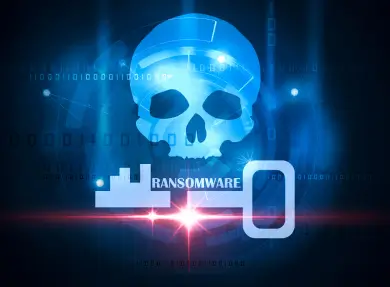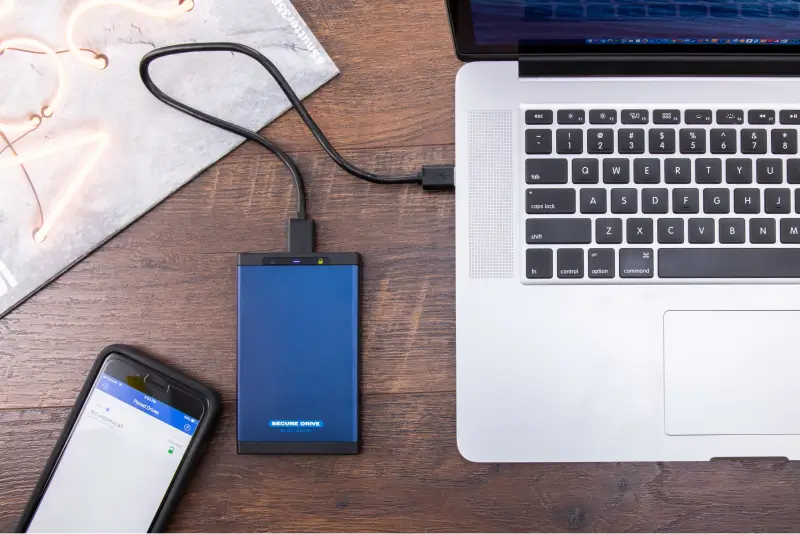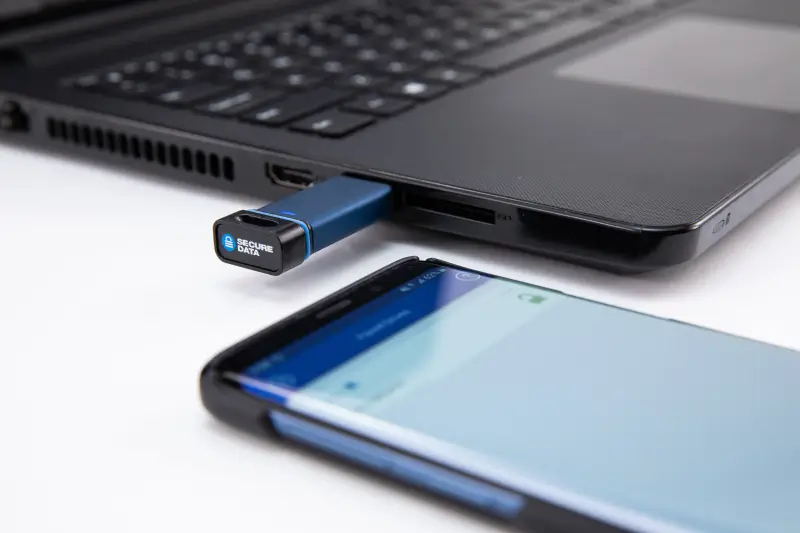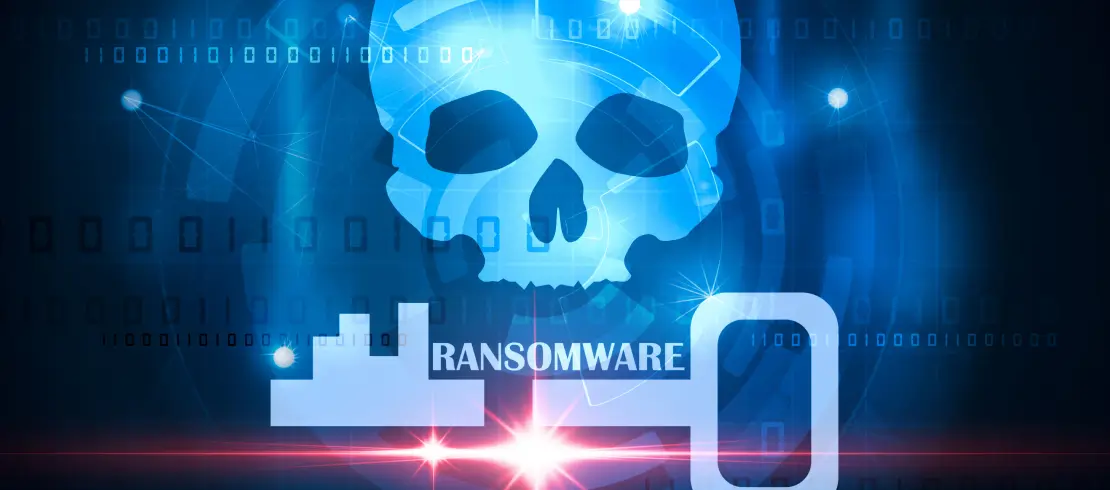The rise of ransomware attacks has become a significant concern for businesses and organizations of all sizes. These malicious attacks can severely impact operations, lead to substantial financial losses, and damage an organization's reputation. Over the past decade, ransomware attacks have surged in frequency and sophistication. The consequences for businesses can be catastrophic. Ransomware can stop operations, resulting in substantial financial costs and eroding customer trust. Given the escalating threat, organizations must adopt robust cybersecurity measures.
One of the most effective strategies for mitigating the risks associated with ransomware is implementing encrypted drives. Encrypted drives are crucial for safeguarding sensitive information and ensuring business continuity.
The experts at SecureData explore the spread of ransomware. We explain the benefits of encrypted drives for secure backups and recovery, and how they can prevent catastrophic data loss in the event of an attack.
Key Takeaways:
- SecureDrive® BT features military-grade encryption and management through an Android or iOS mobile app.
- SecureDrive® KP provides hardware encryption and keypad authentication for access.
- SecureUSB® BT uses an Android or iOS mobile app to protect data stored on a flash drive.
- SecureUSB® KP boasts a built-in keypad to authenticate users before granting access to data.
- Remote Management offers administrators a platform to control access and oversee local backups.
Explaining the Rise of Ransomware Attacks
Ransomware is malicious software that encrypts a victim's computer, server, and data. The attackers then demand a ransom for the decryption key. Over the years, this cyber attack has evolved from relatively simple schemes into highly sophisticated operations, employing advanced techniques and tactics to infiltrate and disrupt organizations. The frequency and sophistication of these attacks have been escalating dramatically recently, posing a severe threat to businesses, governments, and individuals alike.
According to an Apple study on continued threats to personal data, ransomware attacks surged by nearly 70% in 2023 compared to the previous year. This fact highlights the disturbing surge of cyber threats and vulnerabilities. Intwo also reported that over 19 ransomware attacks occurred every second in 2023. Each incident cost businesses an average of $5.3 million. Moreover, 2023 saw an all-time high in global ransomware attacks, with attempted breaches targeting 10% of organizations worldwide. Cybercriminals are continuously improving their methods, making it clear that they are becoming more adept at exploiting digital systems.
Evolution of Ransomware Tactics
The tactics ransomware attackers use have become increasingly sophisticated, leading to the recent surge of global ransomware attacks. Early ransomware attacks primarily targeted individual users, encrypting the victim's data and demanding relatively small sums to unlock personal files. However, attacks have expanded dramatically. Now, attackers target larger organizations, with the potential for significantly higher ransom payments. Cybercriminals also employ a variety of highly advanced techniques, including:
1. Ransomware-as-a-Service (RaaS). Affiliates who subscribe to these services can customize the ransomware, manage encryption keys, and handle ransom negotiations through these platforms.
2. Double Extortion Tactics. In addition to encrypting the data, attackers threaten to publish sensitive information unless victims pay the ransom.
3. Exploitation of Software Vulnerabilities. Cybercriminals often exploit unpatched vulnerabilities to gain initial access to networks. Once attackers identify a vulnerability, they use sophisticated exploits to infiltrate the system.
4. Use of Initial Access Brokers (IABs). The ransomware ecosystem includes specialized roles such as IABs. These actors acquire and sell access to compromised networks. After buying access from these brokers, ransomware groups or affiliates proceed with deployment.
5. Phishing and Social Engineering. Cybercriminals craft convincing emails or use social engineering techniques, such as impersonating trusted entities, to trick recipients into clicking malicious links or downloading infected attachments, deploying the ransomware.
6. Advanced Persistent Threats (APTs). Some ransomware attacks are part of broader APTS campaigns. In these scenarios, cybercriminals maintain a long-term presence in the targeted network, gathering intelligence and preparing for ransomware deployment.
7. Use of Legitimate Tools for Lateral Movement. Cybercriminals often use legitimate administrative tools like Cobalt Strike, Meterpreter, and PowerShell to allow attackers to move laterally, escalate privileges, and deploy ransomware across the network. These tools, designed for penetration testing and legitimate administration, are repurposed by attackers to blend in with regular network activity.
8. Encrypted Communications and Anonymization Techniques. Cybercriminals use encrypted communications and anonymization techniques to evade detection and traceability. Tools like Tor and encrypted messaging platforms enable them to communicate and coordinate without revealing their identities. Additionally, cryptocurrency transactions, often used for ransom payments, provide a level of anonymity that complicates efforts to trace and recover the funds.
Factors Contributing to the Ransomware Surge
Several factors contribute to the increasing prevalence of ransomware attacks:
1. Increased Digitalization. Cybercriminals' attack surface expands as businesses and individuals rely more on digital infrastructure and online services. More devices and data points present more opportunities for exploitation.
2. Remote Work Trends. The shift to remote work due to the COVID-19 pandemic has led to an increase in vulnerabilities. Home networks often lack the stringent security measures in corporate environments, making remote workers prime targets for cyberattacks.
3. Ransomware-as-a-Service (RaaS). The emergence of RaaS platforms has lowered the entry barrier for cybercriminals. These platforms provide ready-made ransomware tools to individuals with little technical expertise, broadening the pool of potential attackers.
4. Exploitation of Software Vulnerabilities. Cybercriminals exploit vulnerabilities in widely used software and systems to gain entry into networks. Despite the availability of patches and updates, many organizations fail to apply them promptly, leaving critical systems exposed. High-profile vulnerabilities, such as those found in Microsoft Exchange servers and VPN appliances, have been frequently targeted. Cybercriminals often reverse-engineer patches to develop exploits, leading to a surge in attacks shortly after vulnerabilities are disclosed.
5. Insufficient Cyber Hygiene. Poor security practices significantly contribute to the success of ransomware attacks. Weak passwords, lack of multi-factor authentication (MFA), and unpatched systems create accessible entry points for cybercriminals. Additionally, inadequate network segmentation and insufficient monitoring allow attackers to move laterally within networks, escalating their privileges and causing widespread damage.
Costs of Ransomware
Downtime: Ransomware attacks often cause significant operational disruptions. Sometimes, businesses must halt operations until they resolve the issue, resulting in lost productivity and revenue. Veeam, a leader in data resilience, states that IT leaders in large companies report that downtime can cost as much as $1,467 per minute.
According to IBM, it typically took businesses 204 days to identify a breach and an additional 73 days to contain it. This timeline is up from 2017, when businesses spent 191 days on average identifying breaches and 66 days before containing them.
Ransom Payments: While paying the ransom is not recommended, some businesses feel they have no other option. Sophos' State of Ransomware 2024 report states the average ransom payments surged by 500% in the past year, reaching $2 million per payment.
Recovery Costs: Following a security breach, businesses usually hire a specialized response team, including forensic investigators and legal counsel.
Fixing Vulnerabilities: Identifying and securing system vulnerabilities can be time-consuming and costly, often requiring businesses to switch providers or redesign their systems.
Fines and Legal Fees: Businesses may face significant fines and penalties depending on the type of data compromised, along with potential lawsuits from affected parties. For instance, the FTC issued a $5 billion fine to Facebook after the Cambridge Analytica scandal.
Supply Chain Disruptions: Attacks on critical infrastructure and key businesses can lead to significant supply chain disruptions. The Colonial Pipeline ransomware attack caused widespread fuel shortages and price spikes across the United States.
Insurance Premiums: As the frequency of ransomware attacks increases, so do cyber insurance premiums. Businesses face higher costs to secure coverage, further adding to their financial burdens.
How Encrypted Drives From SecureData Can Help
As the ransomware threat continues to grow, the need for comprehensive data security solutions becomes increasingly critical. One of the most effective strategies to protect sensitive information from ransomware attacks is encrypted offline backup solutions. By leveraging the power of encryption and offline storage, organizations can significantly reduce their risk of falling victim to these malicious attacks.
Encrypted drives offer a proactive solution for ensuring data remains safe and secure. These drives use advanced encryption algorithms to scramble data, making it accessible only with a unique decryption key. This added layer of security ensures that even if cybercriminals manage to access the drive, the data remains unreadable without the correct key.
The U.S. government's Cybersecurity and Infrastructure Security Agency (CISA) recommends offline encrypted backups and hardware-encrypted portable storage devices as part of its guidelines for protection against ransomware attacks. SecureData's award-winning line of encrypted external drives and flash drives are designed to meet these stringent requirements. These FIPS-certified products provide hardware encryption for the highest level of data protection.
SecureData offers a range of encrypted storage solutions that help organizations safeguard their most valuable asset – information.
SecureDrive® BT and SecureDrive® KP
SecureData's SecureDrive® BT and SecureDrive® KP are FIPS 140-2 Level 3 validated hardware-encrypted external drives. SecureDrive® BT can be unlocked using a mobile app, while SecureDrive® KP features a keypad for PIN-based access.
SecureUSB® BT and SecureUSB® KP
To further enhance endpoint security, SecureData developed SecureUSB® BT and SecureUSB® KP. All SecureUSB devices are XTS-AES 256-bit hardware encrypted and have epoxy-coated internal components to prevent tampering. They are hack-resistant, and all data is wiped from them after ten consecutive unsuccessful password attempts.
Remote Management Console
For enhanced security, users can combine SecureDrive® BT with SecureData's Remote Management Console. This solution allows IT administrators to control who, when, and where data is accessed, providing a complete managed security solution.
Protect Yourself From Ransomware with SecureDrive® or SecureUSB®
Time becomes critical during a ransomware attack, especially when business operations are disrupted. That fact makes prevention even more important because recovering from a digital disaster is expensive.
Here are some benefits of using encrypted drives to protect yourself from ransomware:
- Business continuity
- Data integrity and confidentiality
- Reduced exposure to malicious software
- Regulatory compliance
- Physical security
Our engineers have provided ransomware data recovery since 2007. In that time, they have seen it all. Their experience and expertise with multiple devices and failure scenarios can reunite you with your data. We offer flexible services, including emergency data recovery. As part of our standard service, we offer free diagnostics and quotes. And we back it with a No Data, No Recovery Fee guarantee.
Call us at 800-388-1266 to speak with a specialist.




















